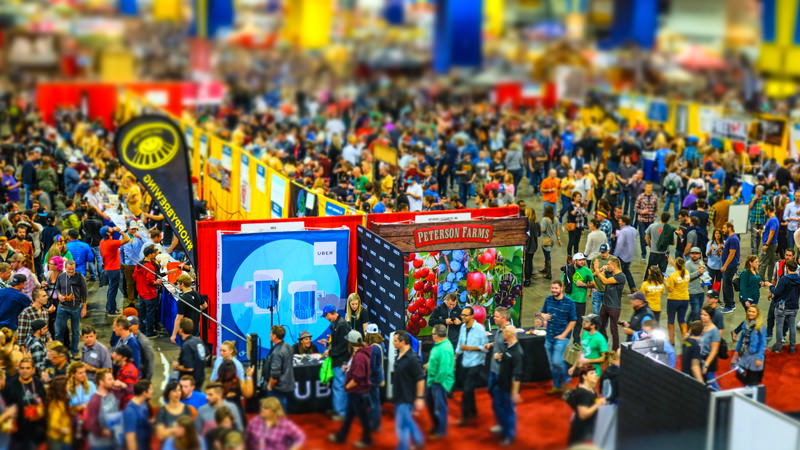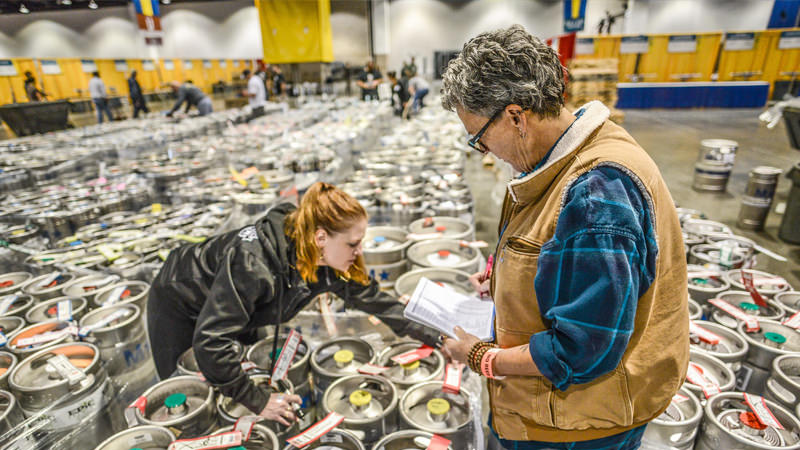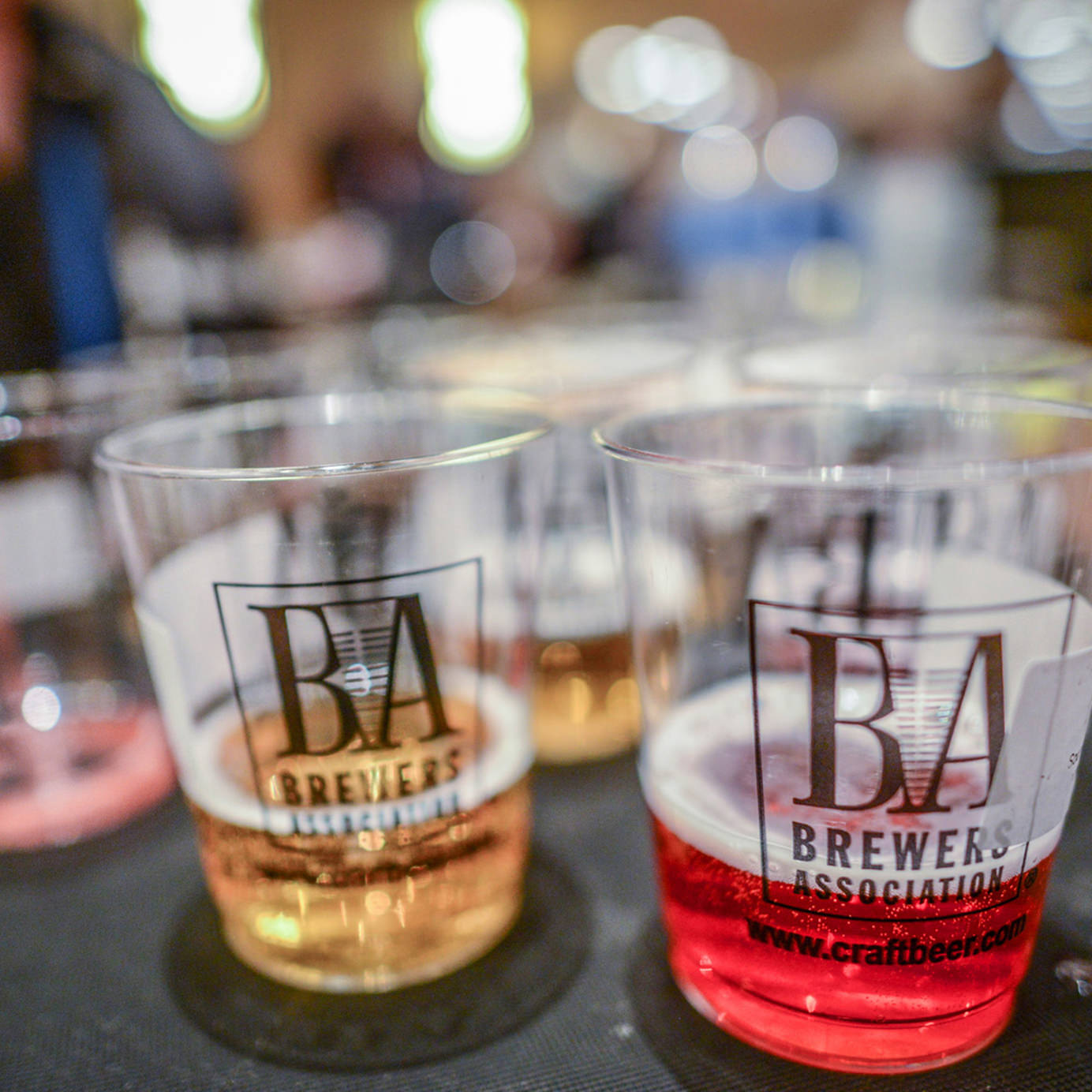At the Great American Beer Festival (GABF) this weekend, I saw the future of sours. Among the 3,900 beers on offer, I tasted some 50-plus sours. What I realized after tasting so many so-called sour beers is this category desperately needs further classification.
Nearly every region of the country produces something that could broadly be called “sour beer.” It’s as diverse and varied a category as gin or rum. Now the knowledge gap needs to be filled.
Craft beer lovers have been heralding the rise of sours for years. Back in 2011 The New York Times published a story titled “Brews as Complex as Wine” that declared “over the next year, as American craft breweries bottle the sour beers now resting in barrels, more will begin showing up in bars and stores.” For a certain subset of American consumers in large beer markets, that was true.
Don't Miss A Drop
Get the latest in beer, wine, and cocktail culture sent straight to your inbox.For the majority of Americans, however, sour beer remained elusive, something to be cherished and sought after — or to be avoided by those who tasted one sour and thought, “Meh. Not for me.”

“Saying, ‘I want a sour beer’ is like if someone asked you what you want for dinner tonight and you said, ‘I want meat,’” Andy Parker, the brewer who runs Avery Brewing Company’s barrel program, says. Parker has been working with Avery for some 15 years, and is referred to alternatively as “Hollywood” (for his personality) and “Chief Barrel Herder” (for his barrel-aged beer passion).
Parker explains that there are wild sours, American sours, goses, gueuzes, fruited sours, and sour brown ales. There are Berliner Weisses and lambics, barrel-aged sours and kettle sours. There are so many types of sours available to consumers that it’s no longer sufficient to just say that you do or don’t like sours, because each one is different.
In general, sours use a strain of yeast called Brettanomyces, or Brett for short. They also have acids and bacteria like Pediococcus and Lactobacillus that create lactic acid, like that of sour milk, and acetic acid, as in vinegar. Many times the bacteria comes from barrels. Sometimes it’s natural from the environment, other times it’s added by the brewer in a controlled environment.
Most obviously, regardless of how it’s made, sours have some degree of acidity.
At the GABF with Parker, I tried Avery’s mouth-watering new Ginger Sour that had, in Parker’s eloquent words, “all the flavors you want to put in your flavor hole.” A few hours later I tasted Wynkoop Brewing Company’s Cucular Proliferation, a gose loaded with cucumber that’s lightly tangy. These two superlative beers were completely different from one another in every way, from taste to acidity level to body. Yet both fall into the general “sour” category.
It’s not really brewers’ faults. With so many styles out there and so many changes in the beer industry, a catchall term like sour allows breweries to market their wares broadly. It’s an invitation to try something unusual — “Hey, here’s something that doesn’t taste like your typical beer. Enjoy!” — without getting mired in details about yeast and bacteria.
“Even brewers don’t know what to call their beer all of the time,” Parker admits.
To better understand the diversity of the sour category, the below explainers provide an entree to each iteration of high-acid beer.

Berliner Weisse
A low-alcohol German wheat beer with high carbonation. Slightly bready malts alongside the sour flavors, but lead by fruity, funky, and earthy Brettanomyces notes. Beers produced in this style outside Germany have to be labeled Berliner Weisse-style.
Commercial examples: Dogfish Head’s Festina Pêche, Bell’s Brewery’s Oarsman Ale, and New Glarus Brewing’s Berliner Weisse.
Flanders Reds
A Belgian beer that’s fruity, with a finish like a dry red wine. They often taste like black cherries, plums, and red currants, with a sliding scale of sourness. The beer is aged up to two years, often in large oak vats called foeders.
Commercial examples: Rodenbach Grand Cru, Cuvée des Jacobins Rouge.
Oud Bruin
A lightly sour Belgian brown ale. Has fruity flavors like raisins, figs, and black cherries. It has a malty character as well. As far as sours go, Oud Bruins are on the lower side.
Commercial examples: Liefmans Goudenband, Petrus Oud Bruin. A good American take is The Bruery’s Gypsy Tart.
Lambic
A spontaneously fermented Belgian wheat beer that’s funky, earthy, and citrusy, and served with little to no carbonation. It’s more sour when drunk young, but when aged it becomes more fruity and barnyard-y. True, perfected lambics are only found in Belgium.
Commercial examples: Cantillon Grand Cru Bruocsella. Upland Brewing Company in Indiana makes a few fruited Lambic-style beers as well.
Gose
A tart wheat beer brewed with coriander and salt. Pronounced gos-uh. Briny and refreshing, without a lot of bitterness and usually low alcohol.
Commercial examples: Westbrook Brewing Co. Gose, Sierra Nevada’s Otra Vez, and Sixpoint’s Jammer. More creative takes on goses include Red Rock Brewing’s Lady Ga Gosa, Quarter Celtic Brewpub’s Mangose, and Cigar City’s Margarita Gose.
Gueuze
A wild-fermented Belgian wheat beer with high carbonation. The wild fermentation can lead to a wide variety of flavors from barnyard to citrus. It is traditionally made by blending one-, two-, and three-year-old lambic beers.
Commercial examples: Boon Oude Gueuze, Lindemans Gueuze Cuvée René.
American Wild Ale
Throw the rules out the window when it comes to American sours. American brewers are taking every style imaginable and making it sour. At the GABF, I tried everything from a Margarita Gose to a slightly sour IPA. Often there’s fruit, but not always. There are Brett beers that use primarily Brettanomyces yeast, mixed-fermentation sours that are essentially a beer style turned sour (on purpose), and wild sours that are usually wood-aged. The majority of sours available in the U.S. fall under this category.
Notable American breweries making sours include Avery, The Bruery, Rare Barrel, and Grimm Ales.
